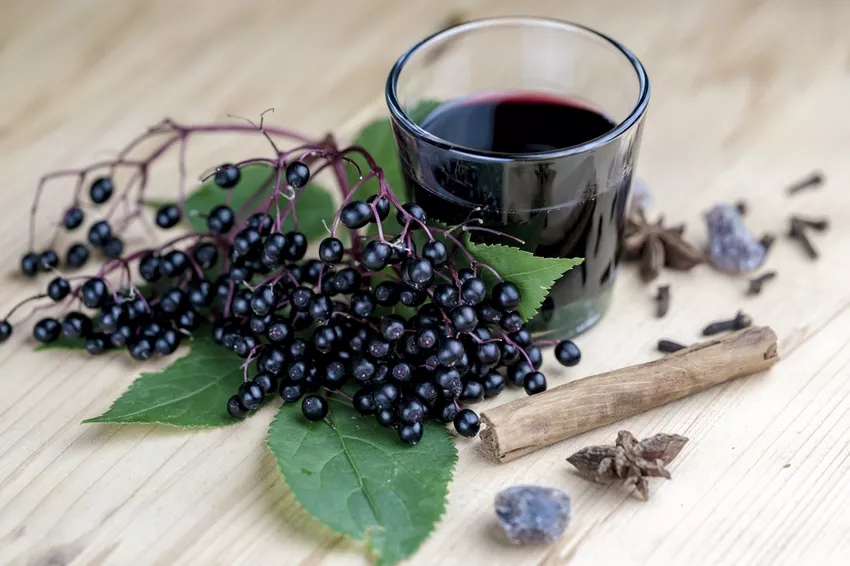The common lilac (Syringa vulgaris) has been cultivated in central European gardens for hundreds of years. The intensely scented shrub was found in farm gardens as well as in monastery gardens - and was used in natural medicine in the Middle Ages. Today, however, the plant is considered slightly poisonous, even if lilac flower and lilac berry recipes seem to speak a different language.
 Elderberries can be used to make delicious syrup
Elderberries can be used to make delicious syrup
Caution, poisonous!
All parts of the lilac plant, but especially the bark, leaves and berries, contain the glycoside syringin, which only occurs in lilac (lat. Syringa). The substance is considered slightly toxic, which you should notice when you try a flower: Even if it smells seductively sweet, it tastes very bitter. As is so often the case in nature, this taste is an indication of the tolerance of a plant for the human or animal organism. Due to the small toxic amounts, you would have to ingest a large number of poisonous parts of the plant in order to suffer from symptoms of poisoning such as cramps, vomiting or diarrhea. However, consumption is not advisable because sensitive people, children and small pets in particular react very quickly.
Edible "lilac" - Attention, risk of confusion!
But if lilacs are poisonous, why are there so many recipes that primarily use flowers and berries? The solution to the riddle is very simple: In some regions of Germany (especially in Northern Germany!) not only the common lilac is referred to as such, but also the black elder (Sambucus nigra). As a result, it is its flowers and berries that are processed into syrup and juice - and which has been proven to actually help against fever, in contrast to the real lilac. So don't let yourself be misled and use the blossoms and fruits of the elderberry bush for teas, infusions and for making juice.
lilac syrup
This "lilac blossom" syrup tastes delicious, especially in herbal teas, in sparkling water or in sparkling wine:
ingredients
- 15 to 20 elderflower umbels
- two kilograms of sugar
- two liters of water
- the juice of a squeezed lemon
- 50 grams of citric acid
How to do it
- First, shake the flower umbels over a kitchen towel to remove dirt and small insects.
- If necessary, you can also briefly swirl the flowers in standing water.
- Drain and remove the flower stalks.
- Boil the sugar with the water until it has dissolved.
- Put the flowers, lemon juice and citric acid in a bowl.
- Pour the hot sugar solution over the mixture.
- Allow to cool and place the covered bowl in a dark and cool place for three to four days.
- Strain the syrup through a fine sieve or cloth and boil again.
- Bottle the finished syrup.
tips
The summer lilac (Buddleja), which is not related to the real lilac, is also considered slightly poisonous.